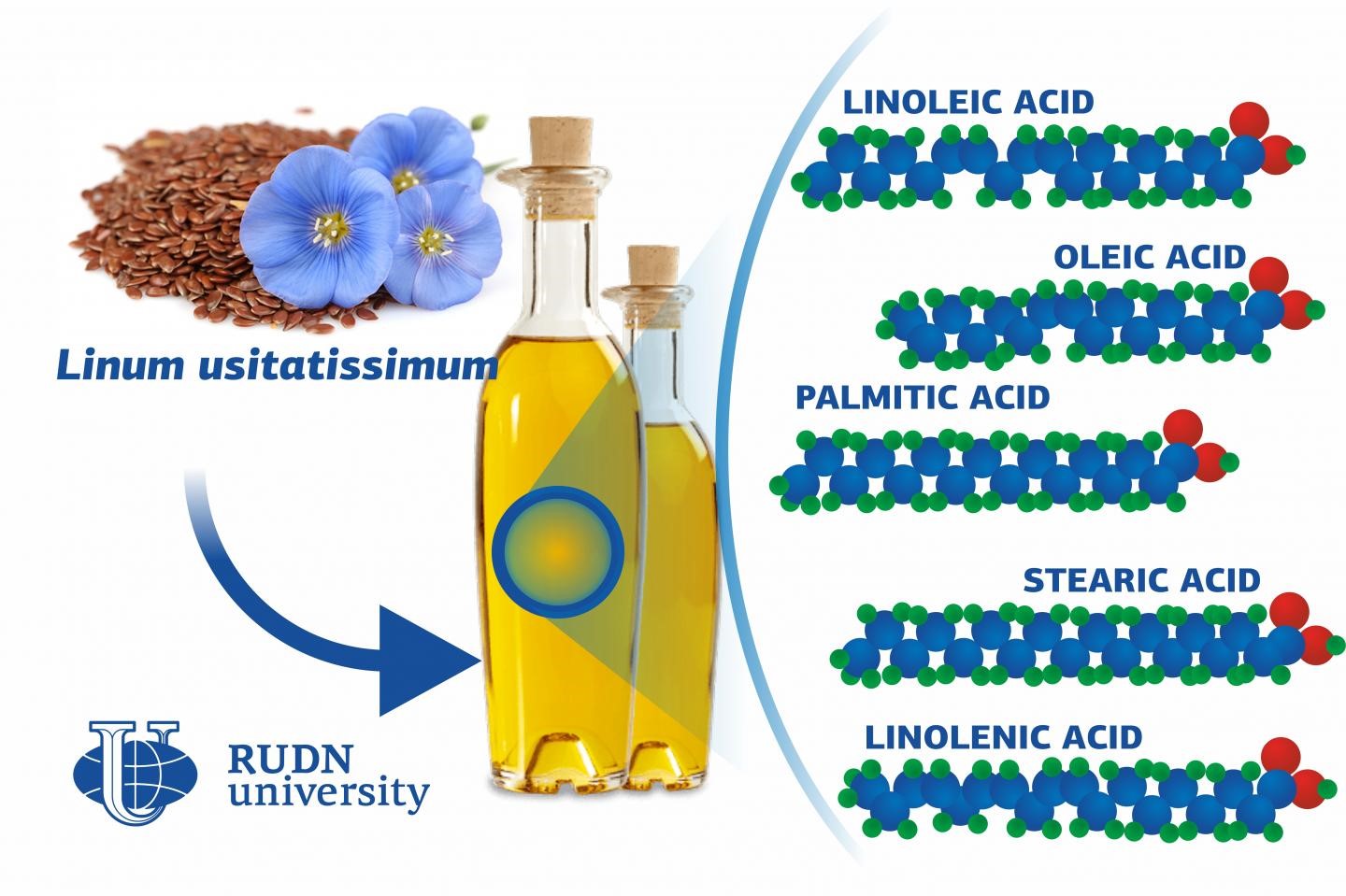Biologists from RUDN University discovered the secret of flaxseed oil with long shelf life

Linum usitatissimum or common flax has been known as an oil crop since the early Neolithic Age. Its seeds are used to produce oil, paints, lacquers, biofuel, resins, linseed oil varnish, linoleum, and pet food, while its stocks are a source of fiber for textiles and sealing materials. Breeds and lines of flax differ by fatty acid content and composition. The lines that contain less than 5% of linolenic acid but have a high content of linolic acid are known for long shelf life which is important for the food industry. The synthesis of fatty acids in flax is determined by genes that belong to the SAD and FAD families. A team of biologists including specialists from RUDN University used deep DNA sequencing to study the genome of flax and confirmed that SAD and FAD genes and their polymorphisms directly affect the fatty acid content in flax seeds and the shelf life of flaxseed oil.
“We created a representative set of 84 flax breeds and lines with different fatty acid content in their oil. Using deep sequencing, we identified the sequences of six genes: SAD1, SAD2, FAD2A, FAD2B, FAD3A and FAD3B,” said Parfait Kezimana, a postgraduate student at the Agrarian and Technological Institute of RUDN University.
The team studied the genetic material of 50 flax germs from each breed and line to find polymorphisms allowing for intraparietal heterogeneity. Using the Illumina platform (MiSeq sequencer) with 400? coverage, the team managed to accurately identify the sequence of the genes.
Based on the content of fatty acids in flaxseed oil and different polymorphisms in the studied genes, the team found out which genes and their allelic variants determined the quantities of certain acids. All but one breed with low linolenic acid content had a polymorphism that substituted the amino acid histidine in FAD3B with tyrosine and the amino acid tryptophan in FAD3A with a stop codon. Thanks to these mutations, the oil made from these breeds of flax has a longer shelf life and is better preserved.
“We have evaluated the polymorphisms of SAD and FAD genes in a set of flax breeds and lines with different oil compositions and identified the polymorphisms that determine the content of fatty acids in them. Our results could be used to develop markers for the genetic selection of new flax breeds. In the future, breeds could be certified based on their DNA sequences,” added Parfait Kezimana from RUDN University.
The article was published in BMC Plant Biology.
Matilda Pavlovna Mityaeva was born in 1925. In November 1942, she volunteered for frontline duty. She participated in the Great Patriotic War from November 1942 to June 1945 as part of the 53rd Infantry Division of the 475th Infantry Regiment. She was wounded twice.
The team led by Sergey Zyryanov, Head of the Department of General and Clinical Pharmacology, became the winner of the All-Russian competition of scientific projects "Technologies for Human Health".
RUDN University constantly adapts to the changes of the modern world and responds to challenges flexibly. This allows us to keep the standard of a world-class research university. The sphere of science is no exception. Peter Dokukin, Head of the Research Division, presented the updated R&D Programme at the meeting of the RUDN University Academic Council.
Matilda Pavlovna Mityaeva was born in 1925. In November 1942, she volunteered for frontline duty. She participated in the Great Patriotic War from November 1942 to June 1945 as part of the 53rd Infantry Division of the 475th Infantry Regiment. She was wounded twice.
The team led by Sergey Zyryanov, Head of the Department of General and Clinical Pharmacology, became the winner of the All-Russian competition of scientific projects "Technologies for Human Health".
RUDN University constantly adapts to the changes of the modern world and responds to challenges flexibly. This allows us to keep the standard of a world-class research university. The sphere of science is no exception. Peter Dokukin, Head of the Research Division, presented the updated R&D Programme at the meeting of the RUDN University Academic Council.